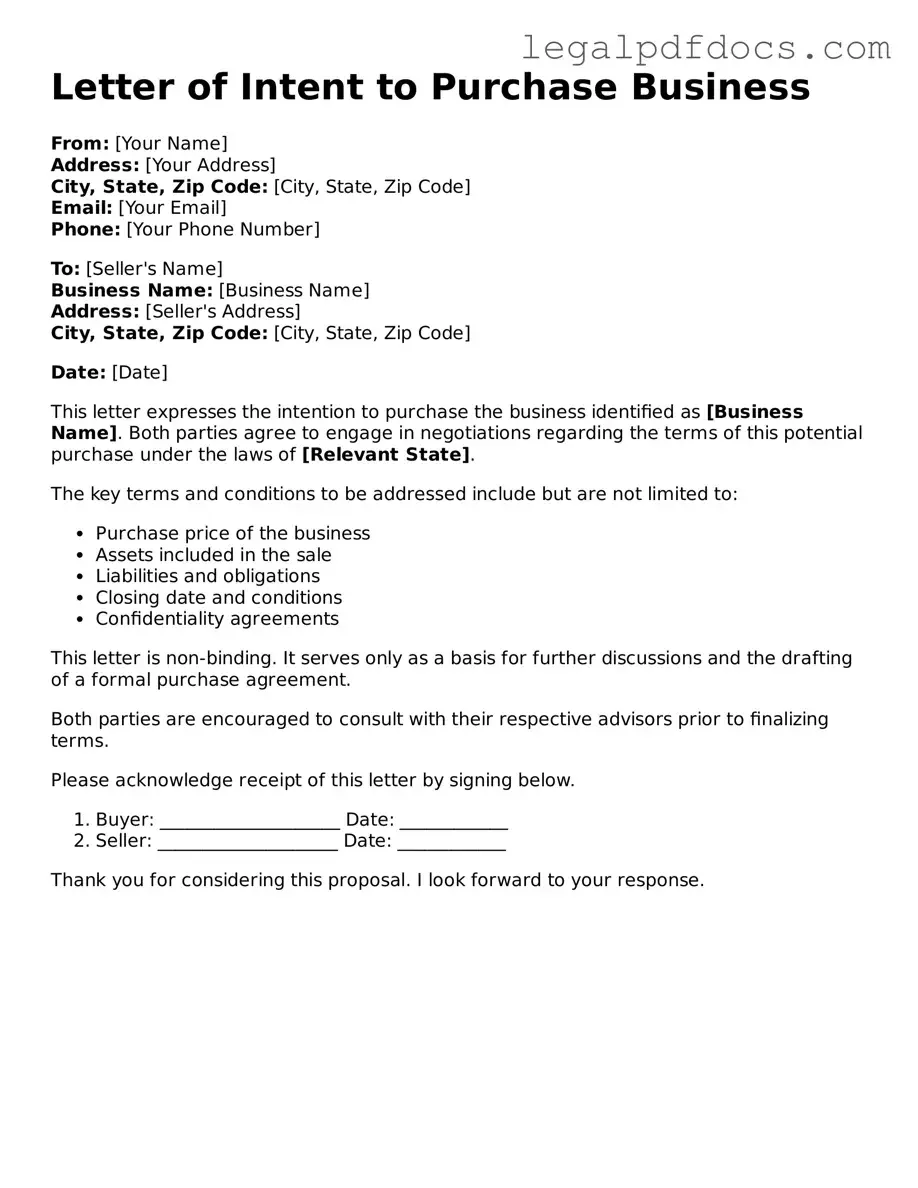Letter of Intent to Purchase Business Template
A Letter of Intent to Purchase Business is a preliminary document that outlines the intentions of a buyer to acquire a business, detailing key terms and conditions of the potential sale. This form serves as a foundation for negotiations and helps both parties clarify their expectations before entering into a formal agreement. If you're ready to take the next step in your business acquisition journey, fill out the form by clicking the button below.
Open Letter of Intent to Purchase Business Editor Here
